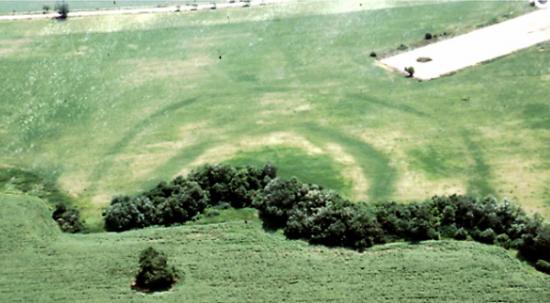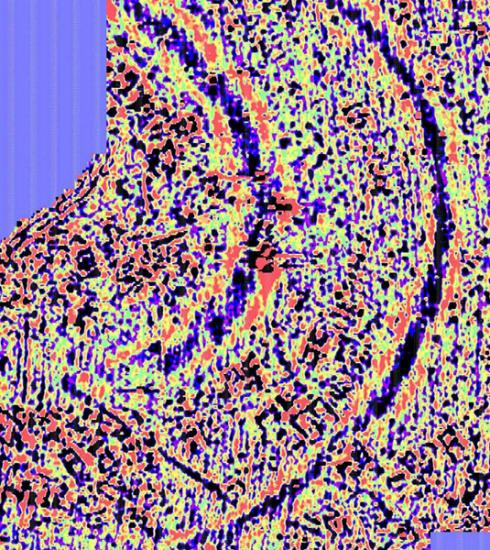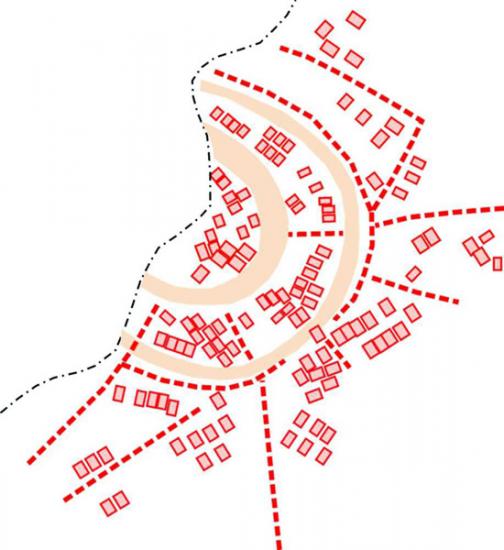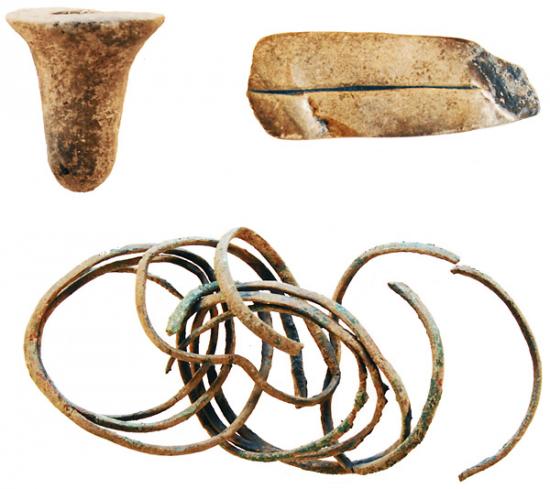Zuzana Vilikovská
Source -http://spectator.sme.sk/articles/view/48132/8/the_vrable_fidvar_bronze_age_site_ranks_among_top_10_digs_in_europe.html

Archaeological site Vráble-Fidvár. Source: TASR
In the municipality of Vráble in Nitra District, a town with advanced urban development and around 1,000 inhabitants existed as long as 4,000 years ago. It is totally unique in central Europe thanks to its size, number of inhabitants, and style of urban development. Slovak and German archaeologists have joined forces to explore the secrets of the Early Bronze Age city. The excavation site in Vráble belongs among the ten most important localities in Europe from the period, alongside Troy and Mycenae, the head of the local archaeological research team, Jozef Bátora of the Archaeological Institute of the Slovak Academy of Sciences in Nitra, told the SITA newswire.
Bátora said the ancient settlement existed in the Vráble-Fidvár locality from 2200 BC to about 1500 BC. It was destroyed by fire, and local wooden houses with thatched roofs probably quickly turned to ashes. It is not known whether the fire was an accident or the work of an arsonist, but no signs of any violent seizure of property were found. Inhabitants probably only managed to save their lives, and could not take much with them: thus, large amounts of pottery, tools, wicker baskets, bronze spikes used to pin clothes, and charred grain were found by archaeologists.
The city was fortified by three ditches, and the middle one protected the central part of the settlement, the acropolis. The area of the whole settlement measured 15 to 20 hectares; four hectares were fortified and the rest were used for farming. “So far, we have found more than 140 houses, which reflects a high concentration of people. Thus, we refer to it as a settlement of urban character,” Bátora said.
The houses are arranged in an arc along the fortifications, with alleys 1 to 1.5-metres wide between them. This model of development, called Anatolian, has its prototype in the eastern Mediterranean area, in locations such as Troy and Mycenae, and also in the Eurasian part of present-day Russia and northern Kazakhstan. In central Europe, it is the only settlement of this type and extent; other settlements from this period were much smaller, having had up to 300 inhabitants.
Archaeologists think that the choice of Vráble for such an urban settlement was due to it being an important centre of metallurgy using non-ferrous metals. “The Vráble locality lies under the foot of central-Slovak mountains rich in non-ferrous metal deposits. We have findings which show a metal production here,” Bátora explained. Five to seven people are believed to have lived in one house. Archaeologists were surprised by the size of the houses – they are 12 metres long and six to seven metres wide, with an oven in the middle.
A rare finding was the skull of a young woman deposited in a ceramic vessel, with the remaining body parts missing. Archaeologists think that this was a human sacrifice to the gods. “It could be a so-called building sacrifice as, in those times there was the habit of sacrificing people when establishing a settlement, or sometimes even when starting to build a house. Moreover, people believed that a person’s soul dwelled in their head,” Bátora explains. This finding is the first of its kind in Slovakia. The skull was placed posthumously in the vessel. It will be difficult to find out how the woman, aged between 20 and 30, died – there are no traces of violence on the skull. The site also includes a burial site belonging to the settlement, where only four skeletal graves have been found so far – the rest will be studied next year.
The Vráble excavation site is also unique in that it comprises three consequent cultures of the Early Bronze Age – Hatvan, Únětice and Maďarovce – while also being the most eastern locality of Únětice culture, and the most western locality of Hatvan culture. In-depth research only began in August and ended in late September, and was conducted by the Slovak Archaeological Institute in Nitra and the German Archaeological Institute in Frankfurt, with 16 Slovak and 16 German archaeology students working on it. “We would like to get a grant for the next two years, based on the research results,” Bátora said. “And then, we would like to repeat this process. If we succeed, the research could theoretically last for 6 to 8 more years,” he concluded.

Fidvár near Vráble 2002: aerial view of the settlement and the two enclosing ditches (source: Kuzma 2005).

Fidvár near Vráble 2007: detail of geomagnetic plan of the central mound with enclosing ditches and foundations of houses (source: Seregély).

Fidvár near Vráble 2007: reconstruction of the Early Bronze Age settlement organization on the basis of the results from the geomagnetic prospection and intensive grid survey (source: Falkenstein).

Fidvár near Vráble 2007: surface finds identifiable as remains of metallurgical activities: tuyère, cushion anvil, bronze hoard (photograph: Falkenstein).
Source - http://www.vfg.uni-wuerzburg.de/forschung/projekte/fidvar_near_vrable/